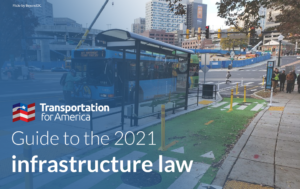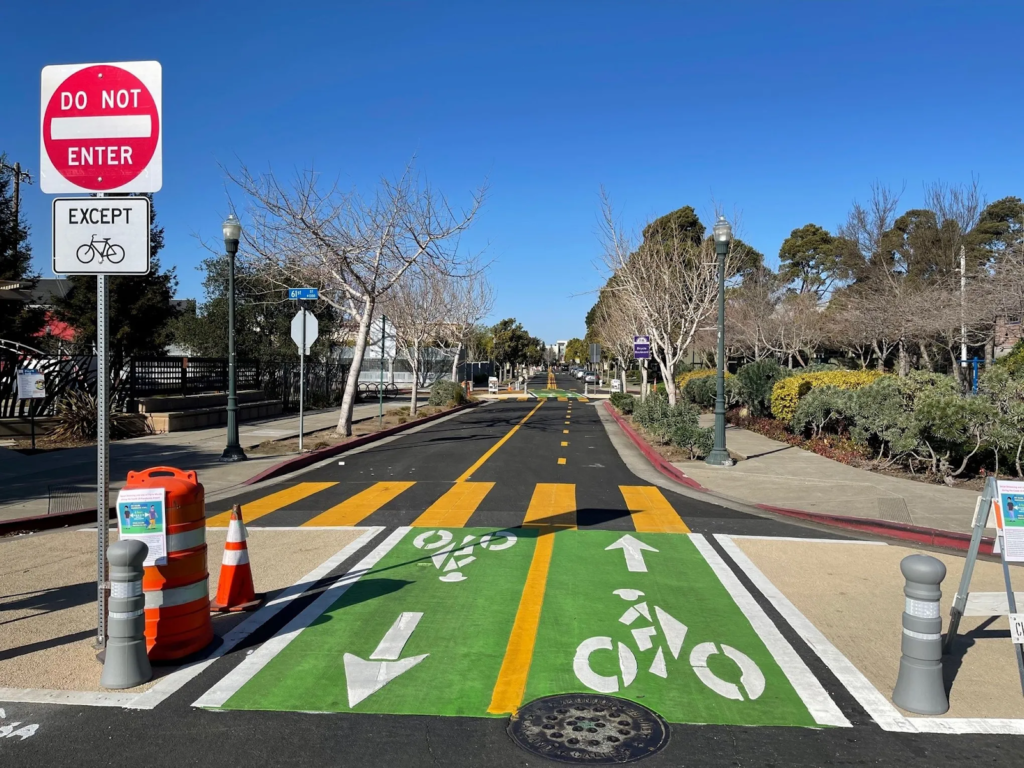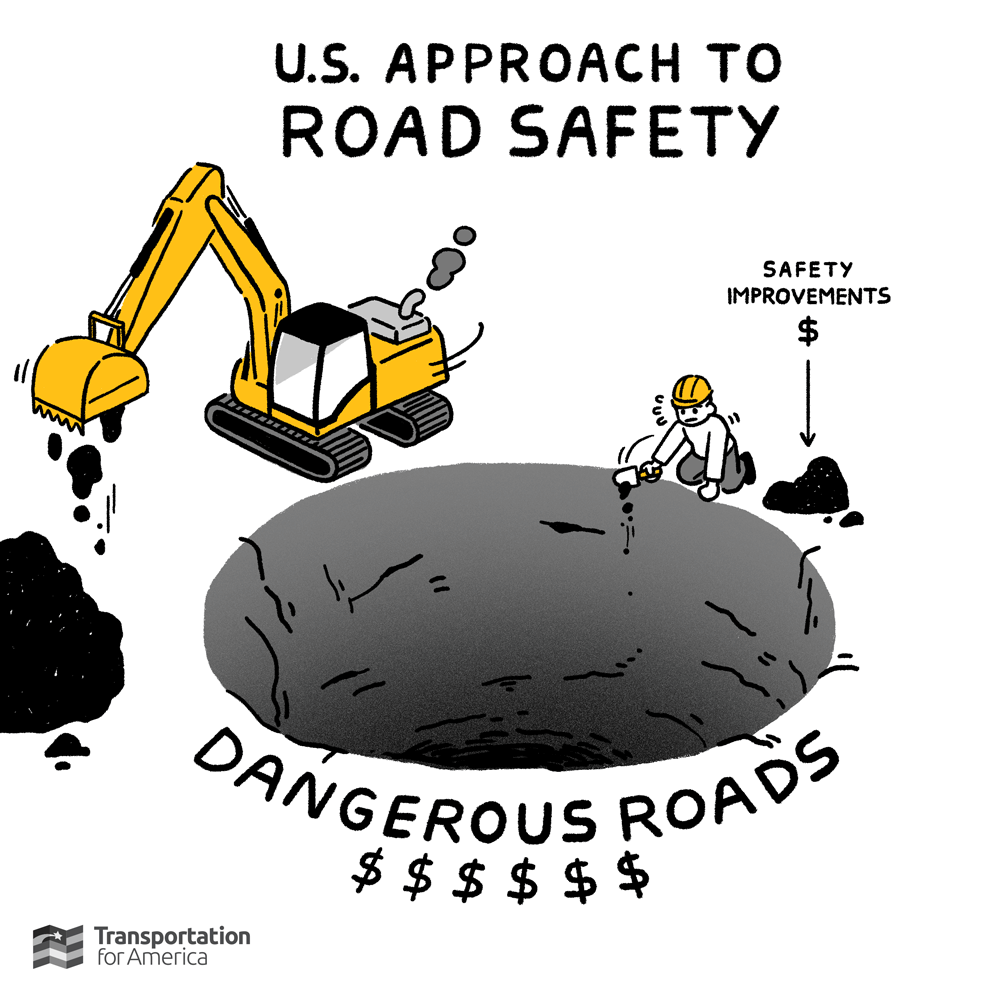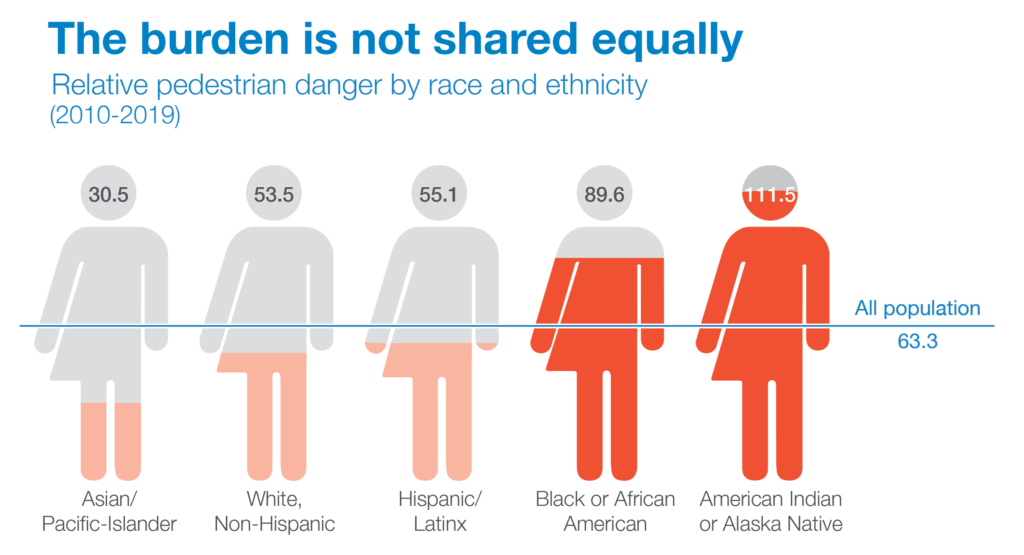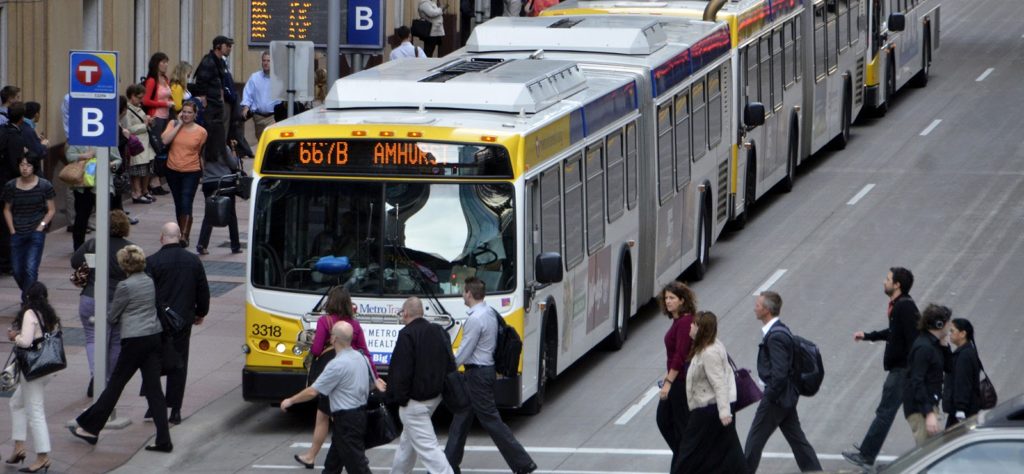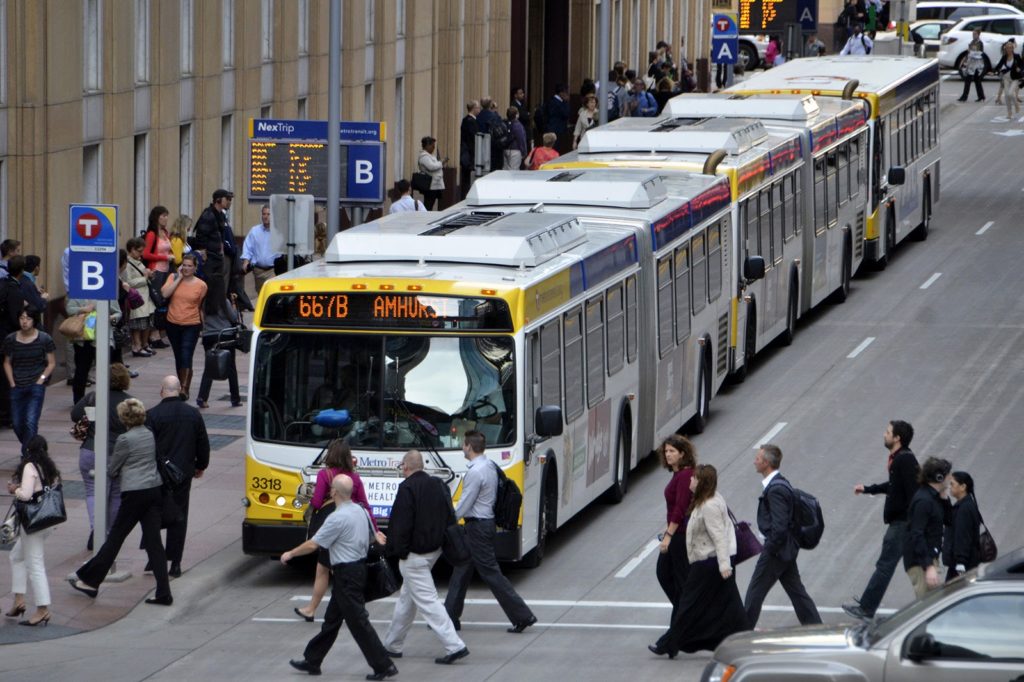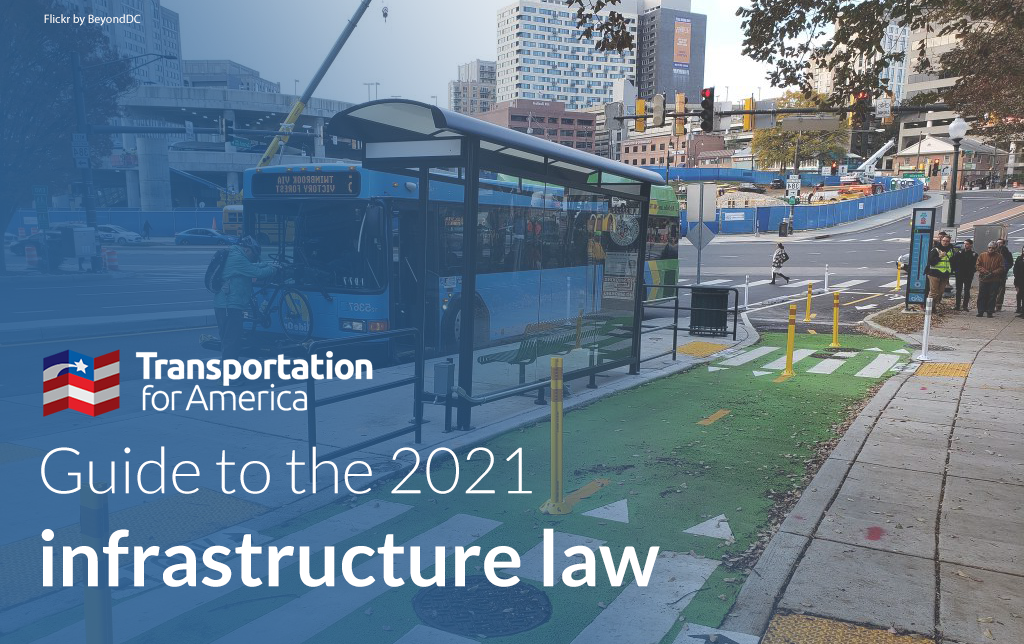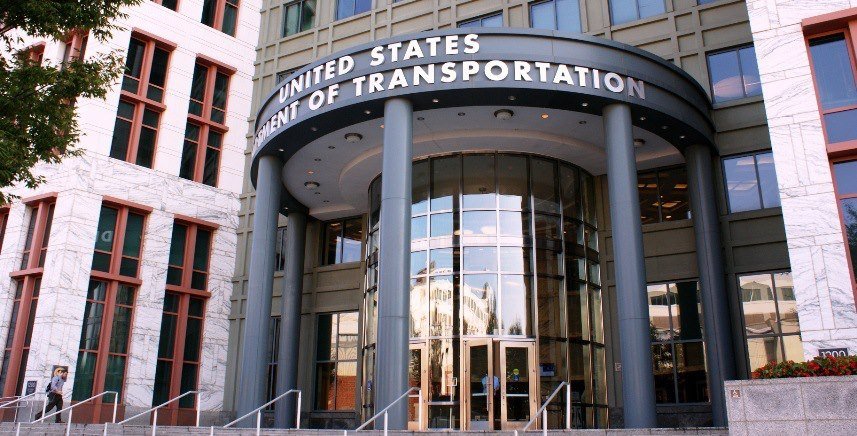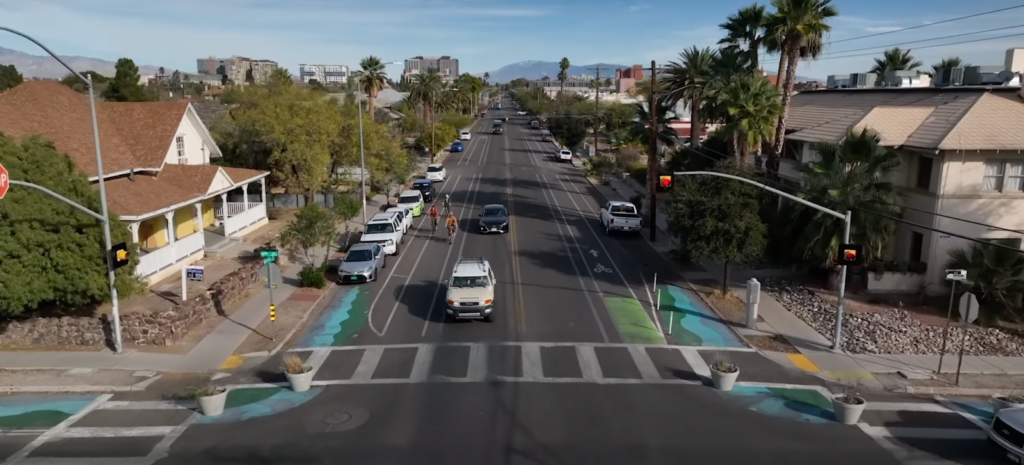

When done right, active transportation infrastructure can cut greenhouse gas emissions, improve public health, keep people safer, and promote equity. But how will the new infrastructure law’s $650 billion in formula and competitive grant programs help to build safer, Complete Streets? What policies changed to prioritize active transportation investments? Here’s what you need to know, and how you can make these programs and policies work for you.
This post is part of T4America’s suite of materials explaining the 2021 $1.2 trillion Infrastructure Investment and Jobs Act (IIJA), which governs all federal transportation policy and funding through 2026. What do you need to know about the new infrastructure law? We know that federal transportation policy can be intimidating and confusing. Our hub for the new law will walk you through it, from the basics all the way to more complex details.
For the purposes of this piece, active transportation refers to bicycling, walking, and rolling, like on scooters, wheelchairs, segways, and other personal mobility devices—as well as the infrastructure that supports those activities, like bike lanes, trails, and safe sidewalks. These types of bike- and walk-friendly infrastructure are usually present in Complete Streets, which we define as streets for everyone—designed and managed to prioritize safety, comfort, and access to destinations for all people who need to use a street.
Getting more people out walking, biking, and rolling can have enormous benefits to public health, climate, economic growth, and equity. But encouraging more routine trips on these modes requires providing safe and convenient facilities in which more people feel comfortable and safe walking, biking, scooting, or rolling. While the infrastructure law preserves the state’s wide flexibility that most use to prioritize moving vehicles quickly over other forms of transportation, it does create new opportunities to expand and improve active transportation through Complete Streets and other projects.
What’s in the law?
Special programs or funds are NOT required for states to make sizable investments in active transportation. If improving safety and providing other travel options are important to your state or agency, the broad flexibility of the biggest federal programs allows them to shift their funding accordingly.
Active transportation and Complete Streets advocates did manage to get some key provisions into the infrastructure law in the form of both policy changes and new or improved funding opportunities. One new funding opportunity is the new $7.3 billion formula and $1.4 billion competitive PROTECT program for at-risk coastal infrastructure grants, where bike/pedestrian facilities were included as eligible projects.
Within the largest pot of funding that states and metro areas control (the Surface Transportation Block Grant program), the amount set aside for smaller but vital transportation projects like bikeways, new sidewalks, safe routes to school, and micromobility was increased from 1.5 percent up to 10 percent. The law also lets local municipalities control more of that funding directly by increasing the share of that 10 percent that they directly control from 50 up to 59 percent. Note: the other largest formula programs with which you may be familiar (the alphabet soup of NHPP, STBG, CMAQ, HSIP) have flexibility for active transportation and Complete Streets projects, but states are responsible for flexing those formula dollars for those purposes versus the status quo of valuing vehicles and their speed.
As is reflected in the table below, states and regional metropolitan planning organizations (MPOs) now have to spend at minimum 2.5 percent of their federal planning funds to adopt Complete Streets standards, policies, and prioritization plans as well as to plan for active transportation, among other goals like transit-oriented development that make active transportation easier.
The new Bridge Formula Program, meant to fix many of the nation’s worst bridges, will be evaluated based on “benefits to non vehicular and public transportation users.” Some groups are optimistic about the active transportation infrastructure that could emerge from these bridge repair projects, but there are numerous loopholes that will allow states to continue leaving these accommodations off as they repair or replace bridges. We want to see USDOT release clear guidance that these bridge projects shall provide benefits to those who bike, walk, and roll.
Most of the new opportunities in the infrastructure law come through discretionary or competitive funding programs. Here’s a brief guide to the funding programs that can be most easily used for active transportation and Complete Streets projects:
Competitive programs applicable to active transportation
| Program name | Authorized funding (over five years) | Can be used for: | Should be used to: |
|---|---|---|---|
| Transportation Alternatives Program (TAP) | $7.2 billion over five years. (10% of each state’s Surface Transportation Block Grant program funds) | Projects that promote modes of transportation other than driving, with notable inclusions being anything eligible under the SRTS program and newly defined “vulnerable road user safety assessments” | Build well-planned active transportation networks that provide enough connectivity and access to induce drivers to switch their mode of travel to walking, biking, and/or rolling. |
| Active Transportation Infrastructure Investment Program | $1 billion, subject to annual appropriations of $200 million each year. | “Active transportation” networks (within communities) and spine (between communities) projects. | Build well-planned active transportation networks that provide enough connectivity and access to induce drivers to switch their mode of travel to walking and biking |
| Safe Streets and Roads for All | $6 billion | “Vision Zero” plans and implementation projects. | Protect pedestrians and bicyclists not by moving them away from roads, but by making roads safer. |
| Promoting Resilient Operations for Transformative, Efficient, and Cost-saving Transportation (PROTECT) | $1.4 billion (competitive grant portion) | Extreme weather resilience and emergency response infrastructure. | Provide evacuation and recovery mobility to all road users. Build biking, walking, and rolling infrastructure into all resiliency plans and evacuation routes. |
| Local and Regional Infrastructure Project Assistance (a.k.a RAISE competitive grants) | $15 billion, up from only $4 billion spent from 2009-2020 | Local or regional projects that improve safety, environmental sustainability, quality of life, economic competitiveness, state of good repair, and connectivity. | Build projects that promote active transportation. Capital projects like in Rockford, IL and northwest Indiana as well as planning projects like in Charleston, WV serve as models for successful complete streets RAISE projects. |
State and regional formula programs applicable to active transportation
| Program name | Authorized funding (over five years) | Can be used for: | Should be used to: |
|---|---|---|---|
| Complete Streets set-aside | 2.5 percent of each MPO’s federal planning funds | Producing Complete Streets standards, facilitating planning for Complete Streets project prioritization plans, and developing active transportation plans. | Lead to Complete Streets policies that focus on equity and strong plans for implementation (more on what the best CS policies look like here). |
| Safe Routes to School Program | $1 million minimum to states, formula based on primary and secondary school enrollment numbers. States can leverage core highway formula funds to fund the program. | Active transportation and complete streets projects, plus education or enforcement activities that allow students to walk, bike, and roll to school safely. | Build complete streets and active transportation facilities that access as many residential and commercial zones as possible. |
| Congestion Mitigation and Air Quality (CMAQ) program | $13.2 billion | Any transportation project that reduces emissions from vehicles, from traffic alleviation to micromobility (bike or scooter share) and electric vehicles. | Focus emissions mitigation efforts on mode-shift away from driving, specifically toward enabling active transportation. |
| Carbon Reduction Program | About 2.56% of each state’s total apportionment from the federal transportation program | Projects that support the reduction of transportation greenhouse gas emissions. | Give people safe and convenient options to bike, walk, or roll instead of driving by planning, designing, and building active transportation facilities. |
| Promoting Resilient Operations for Transformative, Efficient, and Cost-saving Transportation (PROTECT) | $7.3 billion (formula grant portion) | Extreme weather resilience and emergency response infrastructure. | Provide evacuation and recovery mobility to all road users. Build biking, walking, and rolling infrastructure into all resiliency plans and evacuation routes. |
| Bridge Formula Program | $26.5 billion | Replacing, rehabilitating, preserving, protecting, and construction highway and off-network bridges. | Make sure that every bridge repaired under this program includes active transportation infrastructure, not just to check a box, but to connect to adjacent active transportation networks. |
How else could the administration promote active transportation?
America’s roads are increasingly dangerous for pedestrians and other vulnerable users. Without addressing that reality, biking, walking, and rolling will remain dangerous and therefore unattractive options.
Though the infrastructure law overall provides a pittance to active transportation while dumping money into the status quo, there are things USDOT can do to improve access to active transportation. For one, they can give teeth to their Safe System approach, encouraging and guiding State DOTs to develop projects that promote safe roads at low speeds. USDOT already has a statutory obligation on the books to prevent projects that “have significant adverse impact on the safety for nonmotorized transportation traffic” (23 U.S. Code 109(m)). USDOT has never enforced or codified internal procedures for that provision, so the department is actually out of compliance with the law and should rectify that with urgency.
In addition, USDOT should update the MUTCD (the street design manual that all traffic engineers use) to build active transportation priorities into road design from the start.1 USDOT should also release clear guidance on how to best utilize the 2.5 percent Complete Streets planning funds set-aside mentioned above. States and MPOs should look to enhance and improve Complete Streets networks with this funding, not just use this new funding stream for work already underway.
On a positive note, the Federal Highway Administration (FHWA) released a memo that, among other things, urged states to simplify the review process for carbon-cutting safety and multimodal projects like bike lanes and sidewalks. This swift language from the administration is encouraging but not binding, and states can still spend the money however they’d like.
USDOT should immediately pursue all avenues for institutionalizing their new road safety strategy which included a full section on the importance of street design and the role it plays in unsafe speeds and safety. Their guidance on revising our broken process for setting speed limits, including moving away from the 85th percentile rule, is powerful, but will fail to have an impact if states ignore it. FHWA should be trying to enshrine this practice with their division administrators and engage state and local traffic engineers in better training.
How can the new money advance our goals?
It can be hard to measure and assess the benefits of increasing active transportation and building safer, Complete Streets. That’s one reason why we at Smart Growth America produced a Benefits of Complete Streets tool to help local communities better measure the potential benefits to health, safety, environment, and economy (using an equity approach) of Complete Streets in your community. Let’s zoom in on how we can maximize climate and equity benefits from the new infrastructure money.
Climate
Vehicle travel is a key contributor to U.S. emissions, so providing people and goods with mobility alternatives is a clear win for climate. But this is a challenge for such a vehicle-dependent country. A 2018 survey found that travel distance and fatigue were the two main reasons why many vehicle trips were not replaced with bike trips. As such, new federally-funded projects should make walking, biking, and rolling as easy, safe, and fast as possible. Walkability audits and assessments, like this survey conducted by the City of Milwaukee in 2021, can help cities plan for Complete Streets and active transportation facilities in the places where they will have the most impact and shift as many trips as possible away from vehicles.
Equity
Biking, walking, and rolling in low-income communities are often hazardous, unpleasant, and inconvenient modes of travel. Good multi-use paths are often located in the wealthy enclaves of many American cities rather than more marginalized communities. This is a major factor contributing to the higher incidence of pedestrian deaths among BIPOC and low-income people. Cities with equitable active transportation plans use two key strategies: data collection and community engagement. Two good examples: Baltimore, MD models equitable data collection in their Complete Streets performance measures and Huntsville, AL has done great community engagement for their demonstration projects. With these strategies in place, every active transportation project has a stronger chance of creating positive equity outcomes and being strong contenders for competitive grant funding from the infrastructure law.
So what?
A new bike lane won’t have much impact if it just connects to dangerous roads on each end. As former Pittsburgh DOT head Karina Ricks said in this terrific video about their city’s Complete Streets policy, it really requires a complete network approach to build Complete Streets and create safe connections that connect many people to many destinations. Despite all the new funding programs, eligibility, and carve-outs, federal funding for active transportation and Complete Streets is still dwarfed by the hundreds of billions of dollars in funding for roads and bridges. Many of those projects will expand roads and increase vehicle speed, making walking, biking, and rolling more dangerous and inconvenient.
States and localities should be ready to combat this by utilizing their limited active transportation funding in the most effective way possible. And states should use their considerable formula money flexibility to advance active transportation and Complete Streets (they have the authority to do so.) This will include utilizing the above strategies to maximize benefits, but it will also mean positioning for competitive grant application success. Local leaders will benefit from understanding the flexibilities within each funding program so they can make sure they get their share from their state and MPO, whether those entities are friendly to active transportation or not.
The deep irony here is that for all the promises made by Congress about improving safety and providing more options for people to get around, it will be up to state and local leaders to do the heavy lifting to deliver on those promises and get the most out of this law’s modest provisions for active transportation and Complete Streets.
(For more information on active transportation and Complete Streets funding in the infrastructure law, check out our funding brief on the topic.)




